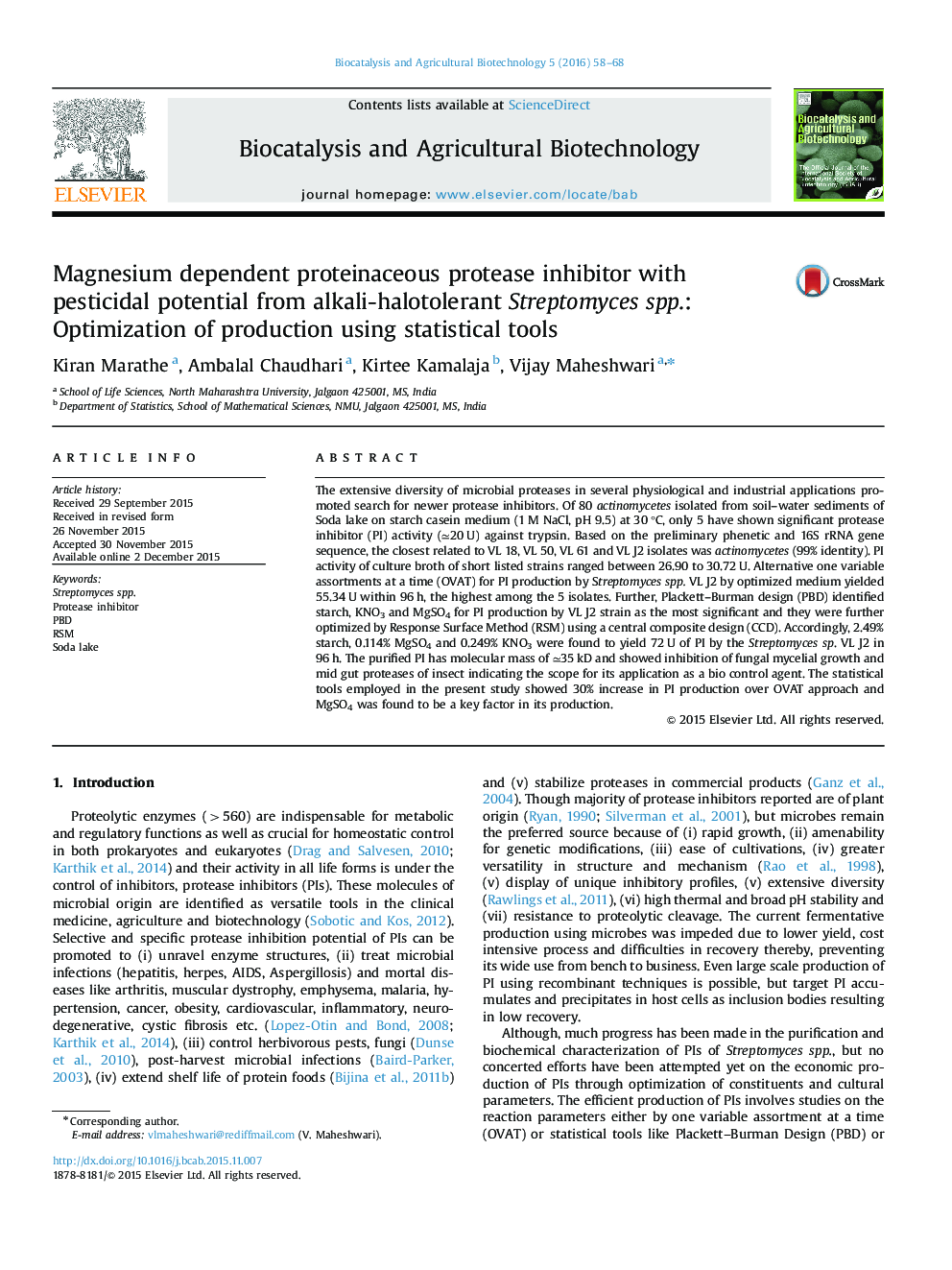| Article ID | Journal | Published Year | Pages | File Type |
|---|---|---|---|---|
| 2075357 | Biocatalysis and Agricultural Biotechnology | 2016 | 11 Pages |
The extensive diversity of microbial proteases in several physiological and industrial applications promoted search for newer protease inhibitors. Of 80 actinomycetes isolated from soil–water sediments of Soda lake on starch casein medium (1 M NaCl, pH 9.5) at 30 °C, only 5 have shown significant protease inhibitor (PI) activity (≃20 U) against trypsin. Based on the preliminary phenetic and 16S rRNA gene sequence, the closest related to VL 18, VL 50, VL 61 and VL J2 isolates was actinomycetes (99% identity). PI activity of culture broth of short listed strains ranged between 26.90 to 30.72 U. Alternative one variable assortments at a time (OVAT) for PI production by Streptomyces spp. VL J2 by optimized medium yielded 55.34 U within 96 h, the highest among the 5 isolates. Further, Plackett–Burman design (PBD) identified starch, KNO3 and MgSO4 for PI production by VL J2 strain as the most significant and they were further optimized by Response Surface Method (RSM) using a central composite design (CCD). Accordingly, 2.49% starch, 0.114% MgSO4 and 0.249% KNO3 were found to yield 72 U of PI by the Streptomyces sp. VL J2 in 96 h. The purified PI has molecular mass of ≃35 kD and showed inhibition of fungal mycelial growth and mid gut proteases of insect indicating the scope for its application as a bio control agent. The statistical tools employed in the present study showed 30% increase in PI production over OVAT approach and MgSO4 was found to be a key factor in its production.
